Pegged as one of the most innovative and historical updates to the wristwatch, the Rolex Oyster case has enjoyed its day in the sun and for good reason. In this in-depth article courtesy of our colleagues at WatchTime India, we take you through the different parts of this piece of horological history and help you understand it better.
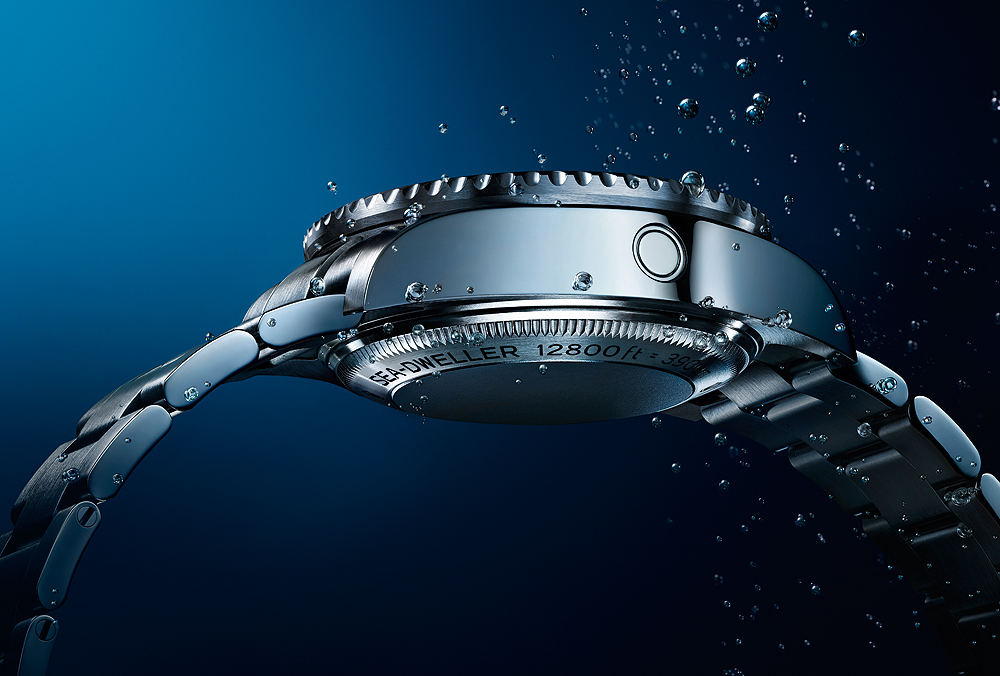
When it comes to understanding why Rolex demands the kind of respect it does, one has to keep in mind the history and expert craftsmanship it has showcased during its many years of existence. From the many successful innovations and creations it has offered to the watch industry, the most noteworthy of them all is the Rolex Oyster case.
Developed in 1926, the Rolex Oyster (as it was named by the brand then), was the world’s first workable waterproof and dust-proof watch case that revolutionized the watch industry in more ways than one. It not only secured the transformation of the wristwatch from a delicate female watch to a sturdy men’s accessory but also effectively became a symbol of robustness and waterproofness. This feature of the Rolex Oyster case has stood the test of time, so much so that most of the watches that come out of the Rolex manufacture have “Oyster” written on the dial.
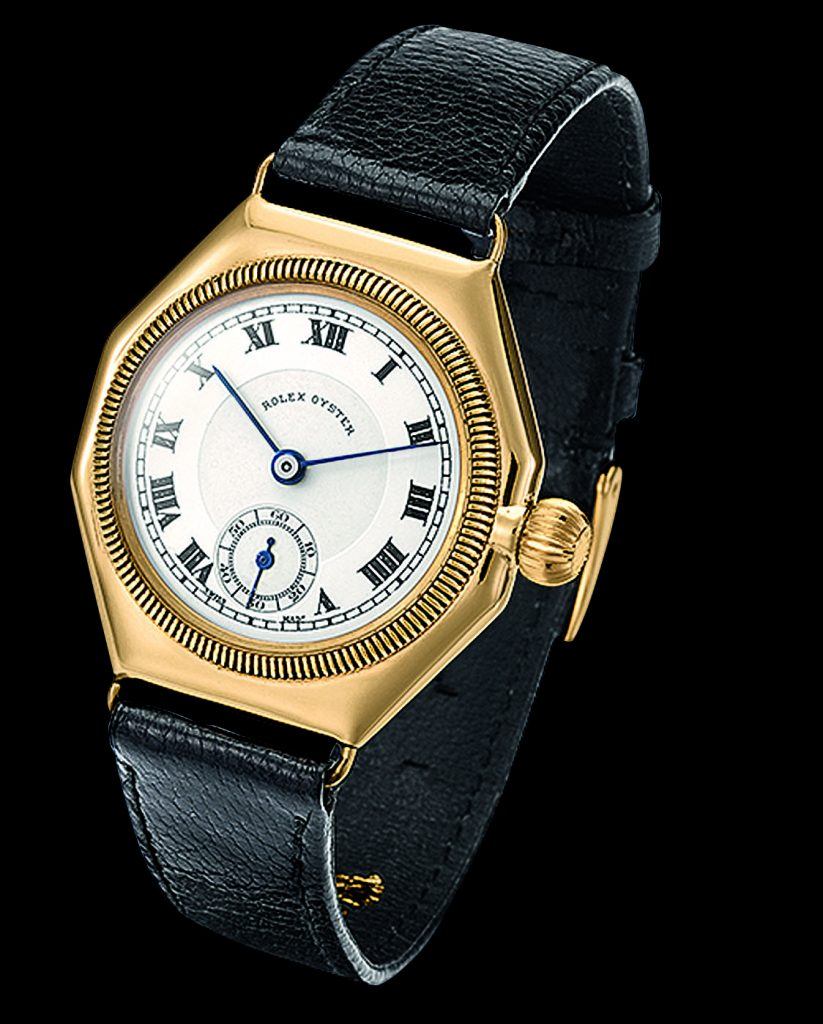
A major milestone not just for the brand but also watchmaking as a whole, the Rolex Oyster combines a hermetically sealed case, winding crown, cyclops lens, fixed or rotatable fluted bezel, a helium-escape valve for the Sea-Dweller and Rolex Deepsea timepieces, and finally the Chromalight display. Taking you through the many parts of the Rolex Oyster case will help you better understand why it is one of the most important inventions of the watchmaking world.
Oyster Case:
Starting from the top, the Rolex Oyster case is hermetically constructed to guarantee a water resistance of 100 meters (330 feet) to 300 meters (1,000 feet) for the Submariner and Submariner Date timepieces, 1,220 meters (400 feet) for the Sea-Dweller and 3,900 meters (12,800 feet) for the Deepsea collection. It also features a solid middle case that is stamped and machined out of a solid block of Oystersteel, 18k gold or 950 platinum. Forming the backbone of the case itself, the central section is extremely robust and offers a secure fit for the overall case structure. A feature found mostly on the Professional models is the crown guard that is set on the side of the middle block and forms an integral part of the case structure. The sapphire crystal is mounted on a gasket that fits perfectly against the flange of the case, adding to the waterproof and dustproof features of the Oyster case. On the back we can see the screwed down caseback with Rolex fluting that is fitted with a special tool. This is done to allow access only to Rolex watchmakers, which further ensures the safety of the movement from external tampering.
Twinlock and triplock Winding Crown
Released in 1953 and 1970, respectively, the Twinlock and Triplock winding crown is a patented feature of the Oyster case that was developed to ensure its high water-resistance. It was this part of the development of the Rolex Oyster case that gave Rolex watches their reputation as having among the most efficient waterproof case structures to date.

While the former comprises a double system of seals (one inside the tube, the other inside the crown), the latter was developed with an additional sealed zone (two inside the tube and one inside the crown). These are identified by one dot, two dots or a line for the Twinlock, and three dots (which could be of different sizes) below the Rolex emblem for the Triplock system. Readily available for the Submariner, Submariner Date, Sea-Dweller and Deepsea divers’ watches, the two winding crowns are made up of around 10 components that offer maximum watertight security akin to a hermetic seal of a submarine’s hatch. The Twinlock and Triplock Winding Crowns are available in three materials; Oystersteel, 18k gold and 950 platinum.
Cylops Lens:
One of the standout feature of the Oyster case is the “Cylops” lens that is present on the sapphire crystal. Its name inspired by the one-eyed giants of Greek mythology, the Cyclops lens was created during the early 1950s. Its main function is to allow the magnification of dates on many Oyster models. This exclusive addition to the crystal allows the wearer to read the date with much ease. Due to its exclusivity, and to the success the innovation garnered, Rolex was quick to put out a warning to all brands that planned to adopt the same feature. “To all watchmakers: we draw your attention to the fact that the watch crystal with the specially shaped magnifying lens is a Rolex exclusivity protected in Switzerland and abroad. We will not hesitate to instigate legal proceedings against any counterfeiting,” stated a notice published in the press at the time.
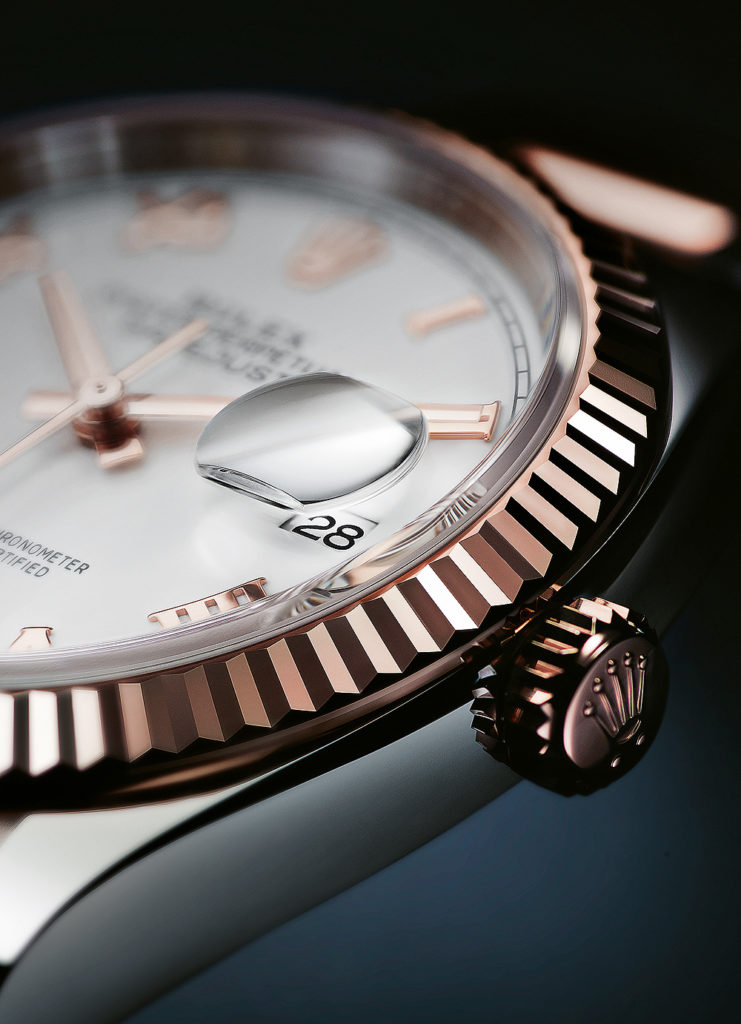
Throughout the years, the Cyclops lens has become a salient aesthetic feature of many Rolex models. It has also changed, from being constructed in a single piece (lens and crystal) of Plexiglas, to now using sapphire with double anti-reflective coating.
Chromalight display:
Build for utmost waterproofness and dust-resistance, the Oyster case was fixed to models that were mainly dive watches. Hence it was imperative to also offer Rolex customers a feature that allowed them to use the watch in dark conditions, such as underwater. To cater to this demand, Rolex began using an innovative luminescent material called Chromalight. This material, which emits a blue glow, offers greater visibility and also extended time of visibility in dark conditions. Applied to the hands, hour markers and other display elements in most watches in the Oyster collections, the high-performance luminescence enabled the wearer to tell time easily in dark environments. The luminosity duration of the Chromalight display is almost double that of a standard luminescent material and can extend beyond eight hours.
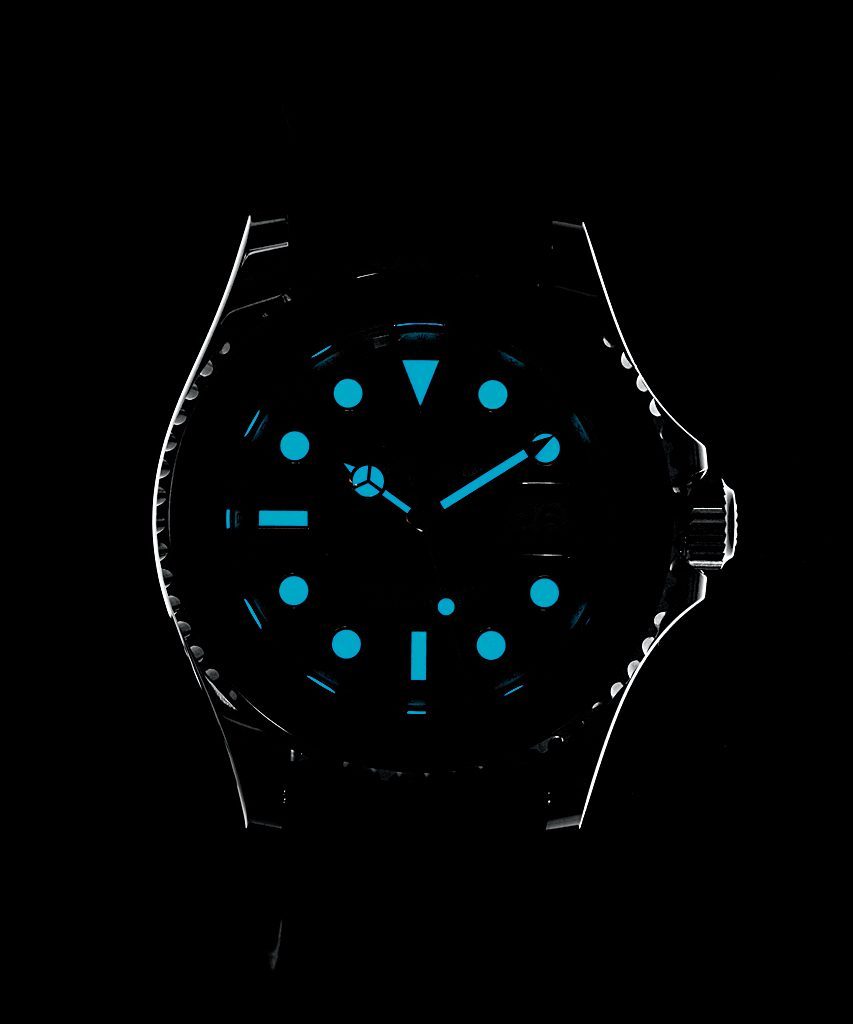
Helium Escape Valve:
Mostly present in the Sea-Dweller and the Rolex Deepsea, the helium escape valve allows excess pressure that is built up in the watch case to be released during a diver’s decompression phase. This is done in a hyperbaric chamber without compromising the waterproofness of the watch. This innovative feature was developed and patented by Rolex back in 1967 and it quickly played a key role in the world of deep diving. The presence of a helium escape valve allowed divers to make deeper dives and spend more time underwater. Like saturation diving, the watches accompanying the diver housed a feature that released helium absorbed by the watch.
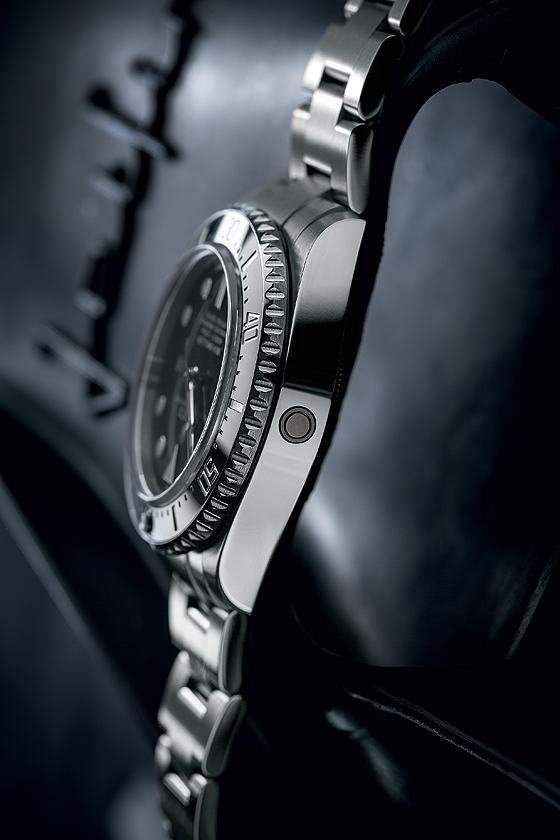
How does it work? Set on the side of the case, the helium escape valve is made up of a hermetic cylinder that houses a piston surrounded by a spring. While the difference between the watch’s internal and external pressure is less the 2.5 bar, the piston remains closed. Once this limitation is crossed, the piston slides automatically outwards, releasing the excess internal pressure.
Cerachrom Bezel Insert and Cerachrom Bezel
When Rolex was in the process of creating the Oyster case, it understood that apart from the robustness of the case, the bezel is also one of the most visible parts of the watch that is prone to external corrosion. For this reason, Rolex developed and patented the Cerachrom bezel insert and the Cerachrom bezel in 2005 for specific Professional models in the Oyster collection. The Cerachrom bezel and insert is made from hard, corrosion-resistant ceramic that is virtually resistant to scratches. It also offers 100 percent color retention and excellent polishability that ensures the bezel retains its luster for a long time.
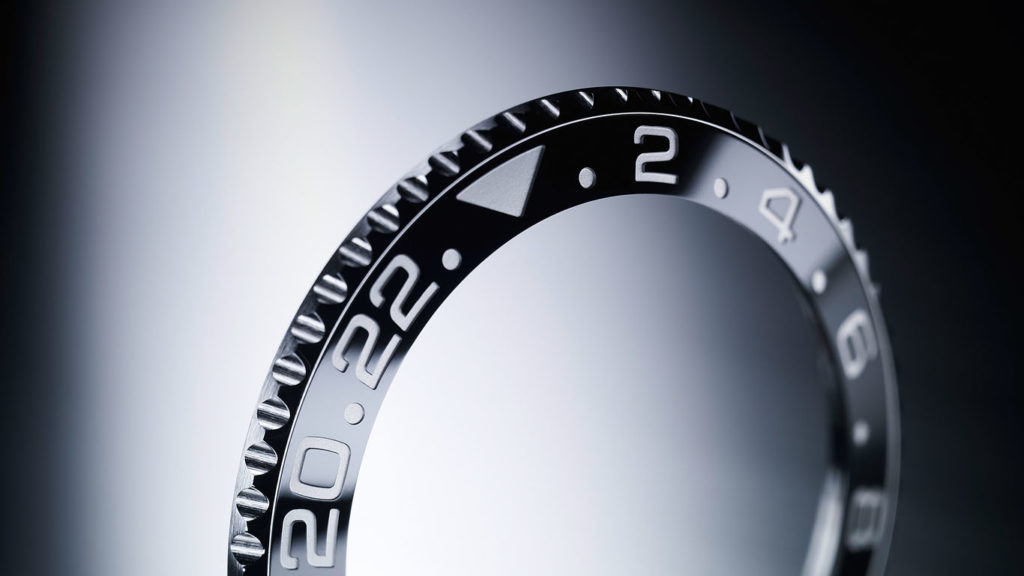
Rolex has expanded the application of the Cerachrom bezel and designed a monobloc ceramic bezel that was first released on the Cosmograph Daytona in 2013. Like the Cerachrom bezel and bezel insert, the monobloc ceramic bezel is extremely resistant and is available today in chestnut brown or black ceramic. Since then, Rolex has been experimenting with new colors for the ceramic bezel insert; these include the first two-color, single-piece ceramic insert in blue-and-black, released in 2013, the red-and-blue one in 18k gold, in 2014; and the 2018 release of two-color inserts in brown-and-black for two GMT-Master II models — one in 18k Everose gold, the other in Everose Rolesor (steel and gold).
All Rolex Oyster cases undergo stringent waterproofness testing. Each case is immersed in water and subjected to pressures 10 percent greater than that exerted at the depth to which it is guaranteed — 35 percent greater for divers’ watches.
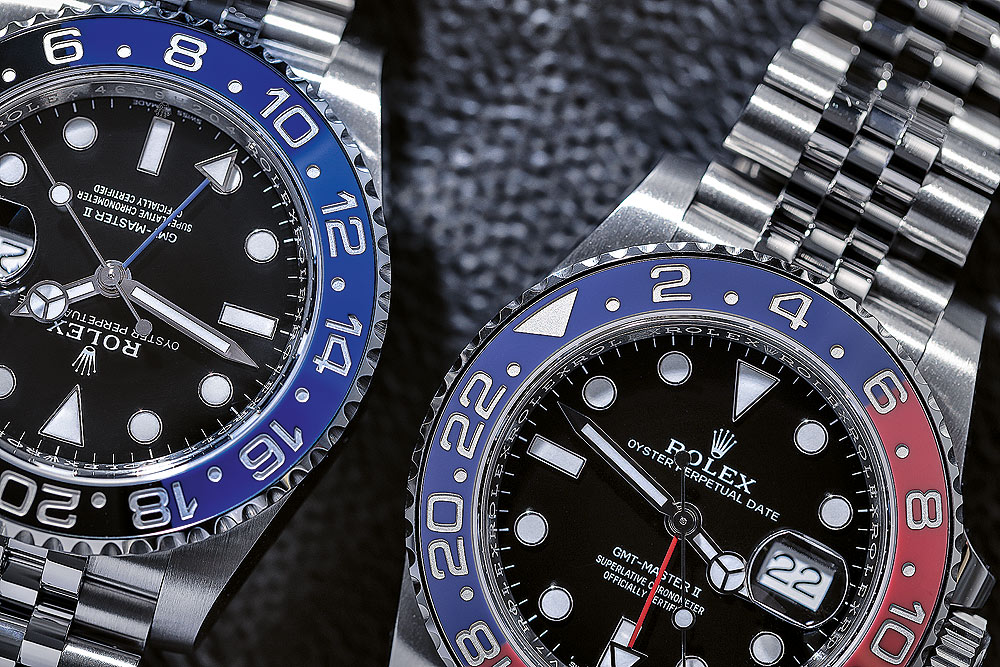
A version of this article originally appeared on our sister website, WatchTime India.


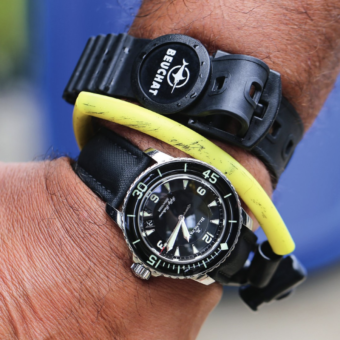
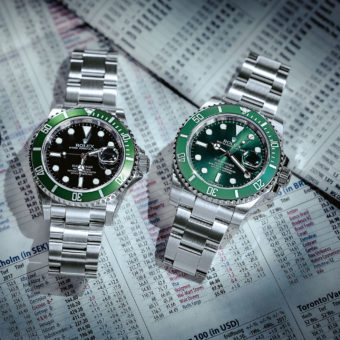
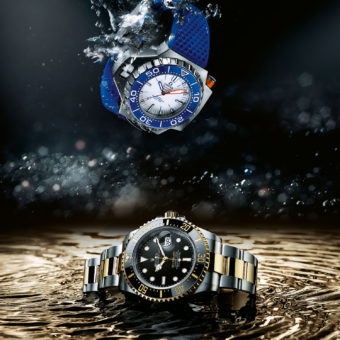

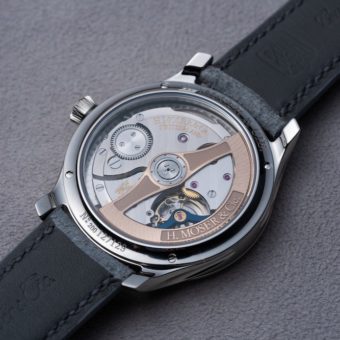
“Developed in 1926, the Rolex Oyster (as it was named by the brand then), was the world’s first workable waterproof and dust-proof watch case that revolutionized the watch industry in more ways than one. ”
Nope. Not even nearly. See ee “The Inconvenient Truth about the World’s First Waterproof Watch, the Story of Charles Depollier and his Waterproof Trench Watches of the Great War” by Stan Czubernat. (Depollier beat Rolex by 8 years.)
The twinlock crown is also in the Explorer watches, not only in submariners. At least in my earlier model.
QUISIERA ESTE COMENTARIO LE LLEGUE AL DIRECTORIO Y AL CEO DE RELOJ.
ES VERGONZOSO Y FUERA DE TODA ÉTICA; EL TEMA DE LA COMERCIALIZACION.
ES INADMISIBLE QUE UN DAYTONA PUBLICA QUE VALE 12800 € ; Y EN TODO EL MUNDO SE VENDE A 26000 O MAS.
MAS VERGONZOSO ES EL BARMAN o PEPSI; QUE SE PUBLICA A 8500 € ( creo ) Y POR ESE PRECIO NO COMPRO NI UNO MODELO 2000 ; CON LA MALLA VIEJA.
ES UNA BURLA PARA CON LOS QUE FUIMOS CLIENTES DESDE JÓVENES ( TENGO 3 Y 70 AÑOS ) PERO AHORA HAY MARCAS MÁS O IMPORTANTES QUE RESPETAN Y CUIDAN A SUS CLIENTES.
UDS DIRÁN QUE SI ALGUIEN LO PAGA, ES SU REAL PRECIO , PERO ENTONCES
“”” NO PONGAN NI PECIO SUGERIDO””. Y ME SORPRENDE QUE CON SU HISTORIA; NACIONALIDAD; ( no pertenecer a ninguno de los grupos que lentamente van apropiándose de las más prestigiosas marcas ) MANTIENEN ESTA POLÍTICA; QUE YO PARTICULARMENTE PARA MI ES
“””””” SIMPLE Y LLANAMENTR ( al menos en mi país ) Y UDS SIN SUIZOS; QUE NO ES UN PAÍS BANANERO DE 4 ta JERARQUÍA
PERO ROLEX …..; FUE; ES Y SERA ROLEX………
UDS LO SABEN Y DE ESO SACAN PROVECHO.
Y SI NO PORQUE NO ME LOS VENDEN UDS AL PRECIO PUBLICADO O ATRAVES DE ALGÚN DISTRIBUIDOR AUTORIZADO; NO A ESOS APROVECHADORES CIRCUNSTANCIALES QUE LOS PUBLICAN JUNTO A MARCAS DE 4ta CATEGORIA; EN ESAS FERIAS PERSAS; DONDE VALE TODO.
¡¡¡ ¡¡¡¡CUMPLAN CON SU PALABRA !!!!!!!!
VENDANME UN BATMAN Y UN PEPSI A VUESTRO PRECIO OFICIAL. Y YO LES FIRMO UN CONTRATO; QUE UNA VEZ AL AÑO LES DEBA MOSTRAR QUE SIGO SIENDO EL PROPIETARIO; (( YA QUE LO COMPRO PARA USARLO NO PARA VENDERLO )) Y COMO CASTIGO SI LO VENDIERA LES TENGA QUE DEVOLVER 3 VECES EL IMPORTE PAGADO ; Y PARA QUE LA PRUEBA SEA REAL, UNA VEZ AL AÑO DEJO PRESENTARME PARA RATIFICAR MI PROPIEDAD LO HAGA FRENTE A SU AGENTE OFICIAL; QUE ES QUIEN CUMPLE CON TODOS LOS REQUISITOS COMERCIALES ; MORALES Y SERIEDAD ( razón por la que le abran dado la representación en mi país ARGENTINA)
ESO CREO, PERO AL SUCEDER LO RELATADO; DUDO DE SUS CUALIDADES COMERCIALES.
DEMUESTREN QUE NO SÓLO HACEN RELOJES DE LOS QUE MÁS SE PUEDE DECIR; PASAN LOS AÑOS Y
ROLEX SIENDO ; ROLEX
Al menos LES PIDO TENGAN LA GENTILEZA DE CONTESTAR MI INQUIETUD.
ESTO SERÁ MANTENIDO EN SECRETO TOTAL; FIRMANDO TAMBIÉN UN CONTRATO DE PRIVATIZAR
Knowing how it become to be outer parts,
truly informative to owner. I own a ‘93 mid jubilee used & would like to know service require to maintain accuracy.
Wonderful explenation indeed Rolex is a masterpiece of a watch
My Rolex gold diamond genuine leather is design new 2022 with automatic clock best model.
Rolex is a master piece crafted for years and years to wear